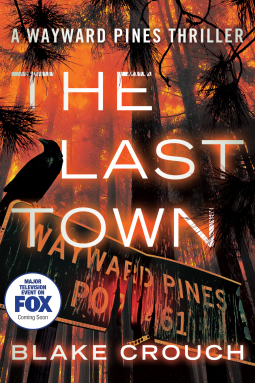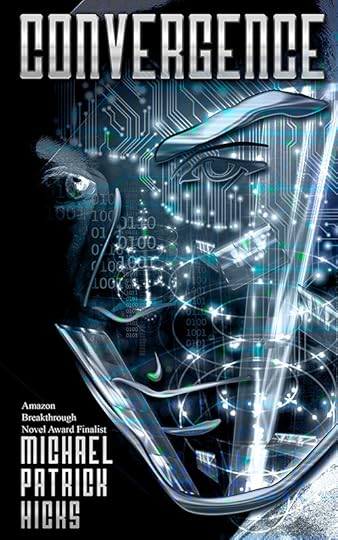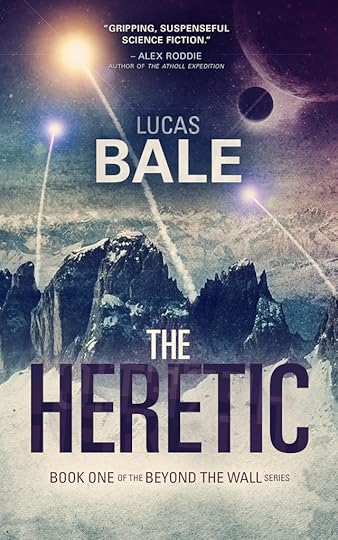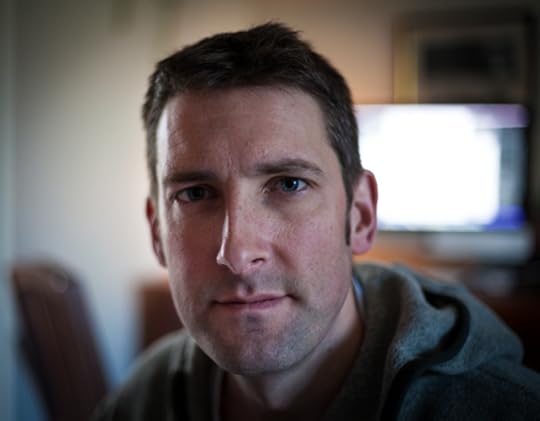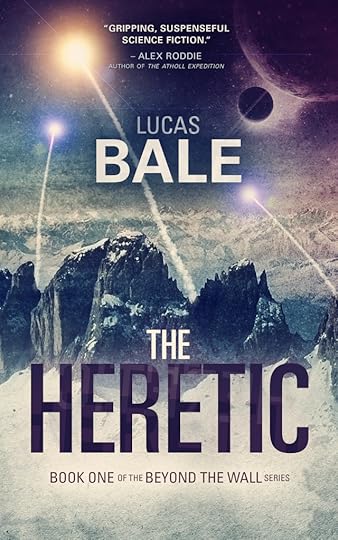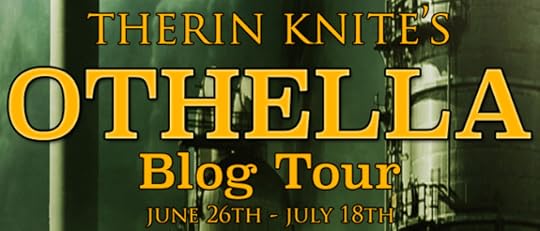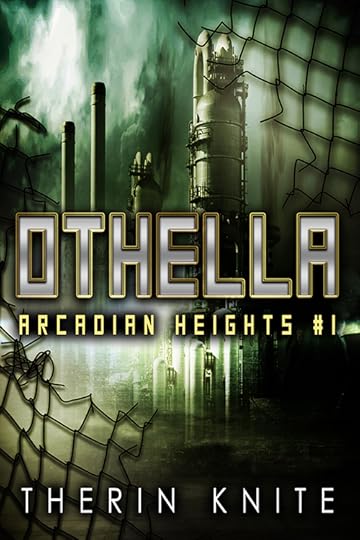Michael Patrick Hicks's Blog, page 80
July 14, 2014
Guest Post: Author J.S. Collyer “For The Love”
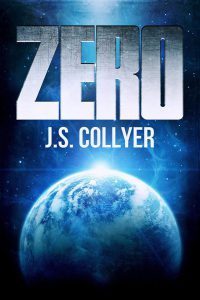
Zero, the debut novel from J.S. Collyer, is due out in August 2014 from Dagda Publishing.
I’m fairly certain I stumbled upon J.S. Collyer thanks to some smart postings over at Chuck Wendig’s blog, smart enough to get me awfully curious about what was happening in her corner of the blogosphere. Good stuff, it turned out. She blogs, hosts her short fiction, some of which has been published in various collections, and generates some great Flash Fiction Fridays work. I liked what she had to say, and when I learned she had her first novel coming out soon, I knew ZERO would not only be making its way onto my to-read list, but that it would be jumping over a lot of other titles to become a next-read. Naturally, when she asked for some advanced readers at her site, I leaped at the chance. You may be asking yourself why, and my answer is simple: SPACE PIRATES.
I mean, seriously, what the hell else do you need to know? Well, OK, if you want a little bit more info, you can check out my review.
Over the last few weeks of coordinating for this post and figuring out my reading schedule so I could get to ZERO ASAP, her publishers, Dagda Publishing, ran an IndieGoGo campaign to off-set the marketing costs, and to help pay for the marketing of other future, fresh authors like J.S. That campaign took off like a bat out of hell and broke their $1500 funding goal in roughly 24 hours. When her publisher says, “Her vision for “Zero” is one of the best we have seen in the world of new SF authors in a long time,” and given what I know of her, her voice, and her work, I have to say, it is not just a bunch of PR fluff. She is a great new voice in realm of science fiction, and ZERO is most definitely a title to watch out for.
Below is the synopsis for ZERO, and then I’m turning the rest of this post over to J.S. Collyer with her article, “For The Love.”
About ZERO
Kaleb Hugo is everything an officer of the Service should be: loyal, expertly trained, unquestioning. He has done everything ever ordered of him and has done so with a pride that comes from knowing you are fighting for the good of humankind… until the day that he made a decision, as he has had to many times before, in order to ensure the best outcome for the Service, even though it was in direct violation of regulations.
A battle was won, but Hugo was condemned and dishonourably discharged by Service commanders for going against orders and risking himself and his unit to save an inhabited satellite that had been determined as an acceptable loss.
Officially, anyway.
Unofficially, Hugo was re-assigned to captain the crew of the Zero, an eight-man craft that is classified in all Service records as, at best, a privateer ship and at worse a smuggling and borderline criminal enterprise vessel. What very few people in the Service know is that the Zero, and its crew, are contracted by the Service. Their role is to investigate and infiltrate the less savoury and unacknowledged levels of human society. They sell on, buy in, bargain, threaten and report back on everything the political levels the Service don’t officially want to know.
The Zero’s rag-tag crew look to their commander, Ezekiel Webb, as their leader and middleman between the regimented expectations of the Service and the harsh and unpredictable demands of the underworld of colonial space. He knows he is not captain material but has not managed to serve well under any that have been placed over him. Both Captain and Commander clash, but they will have to adapt and find a compromise if the Zero is to carry out her missions successfully and for the harmony of the crew.
As the Zero is assigned missions by Colonel Luscombe, her crew is pulled deeper into an orbit-wide game of politics, deceit and corruption which will threaten to tear them apart and throw Humanity back into a cycle of war and destruction. To stop this and preserve the fragile peace, Hugo, Webb and the crew will have to overcome personal tragedy, insurmountable odds and every cruel depraved twist of fate that the Orbit can throw at them.
As events escalate out of control, Hugo will have to go against everything he has ever believed in to save his crew and billions of innocent people. The outcome is always uncertain, but for the crew of the Zero, it was always this way. What will transpire will decide not just their fate, but the destiny of the entire Human Race.
For The Love
If writing ever since I was old enough to hold a pencil has taught me anything is that you need to be in this game for the love of it. Writing is hard work. It takes commitment, time, sometimes money (courses, computers that crash, computers that don’t crash, retreats, workshops, books), blood, sweat and tears. It can really take a lot out of you, especially at those low moments when you look back at all you’ve done and wonder if you’ve done anything.
Fortunately, such moments are few and far between and always pass if you’re in it for the love. It’s the love of your craft that makes it all worth it.
So be true to it. Be good to it as you want it to be good to you. Give it time and attention and care. Be prepared that you’ll hit some rough patches but that it will always pan out. Don’t compare it to others’. Studying others’ techniques, processes and ideas is a great way to inform your own, but don’t use them as a yard stick by which to measure your own work short. Every relationship is different and only defined by those in it.
Be patient with your work. It may take you an afternoon to write a short story, or a week, or a year. You may write one haiku every Christmas or an epic novel every six months. Whatever it is you and your writing create together, it was what was meant to be.
Embrace it.
Though it may sound like common sense, one of the hardest things I had to get my head round was writing what you enjoy, rather than what you think you should enjoy.
I struggled for many years trying to be the sort of writer I wasn’t. I did an under and post-graduate degree in Creative Writing. I worked with some really amazing writers whose work ranged from semi-autobiographical histories of their communities to literary drama and beyond. I was awed and humbled by them and felt I should try to be like them.
I failed. Of course I did. I haven’t got a literary bone in my body. I like swords, spaceships, ghosts and lasers. Other worlds and other possibilities are what spark my imagination and always have. They are what I seek out in the fiction I read and are always, always, the backdrop to the narratives in my head.
It may seem like a no-brainer to ditch the reflective prose and blast off in a rocket, but when you are wanting to make the best out of your opportunities, it is very easy to take the wrong path, perceiving it to be the best, the most promising, the most lucrative or the one recommended to you by others. I begrudge no one who does this and wins out. If I had been more determined I might have managed it. But the fact is, I wasn’t enjoying the fiction I was writing. And you can bet the last penny in the bank that if you’re not enjoying writing something, your audience are not going to enjoy reading it.
Shrug off your preconceptions and write what you enjoy. If you want to write space opera, epic poetry, noir crime with a paranormal twist, historical romance, do it. You will be far better at writing that than you would be at something you were not meant to. And, besides, even if there are a million other writers in that genre or none at all, no one, no one, will write it like you will.
Let other writers handle their own corners of the fictional world and you concentrate on your own. You and your writing….all you have is each other. And your audience.
And don’t say ‘what audience?’. There will be an audience for your fiction out there somewhere. If there’s an audience for Bigfoot erotica (it’s for real, Google it…though you might want to turn off the image search) there’s an audience for your story.
True, it’s the getting it from your head to audience that’s the tricky part.
Tricky, time consuming…but fun. Even when you want to cry or scream or throw you hard drive against the wall…part of you should still be having fun. Part of you should still be in love with what you’re doing.
Love is what makes the world go round and the relationship between you and your writing is precious and private and answerable only to the two of you. Do right by each other and just see what you can achieve.
 J. S. Collyer is a science fiction writer from Lancaster, England. Her first novel, ‘Zero’is due for release by Dagda Pubishing August 2014.
J. S. Collyer is a science fiction writer from Lancaster, England. Her first novel, ‘Zero’is due for release by Dagda Pubishing August 2014.
She shares fiction and musings on writing on her WordPress http://jcollyer.wordpress.com
‘Like’ her on Facebook: facebook.com/jscollyer
Follow her on Twitter: @JexShinigami








July 13, 2014
The Convergence Is Near
Implantable memory devices are getting closer to reality thanks to a $40 million initiative from the Department of Defense. [Image from Mod Vive.]
If you’ve read my book, Convergence , (which happens to be on sale right now for only 99 cents!) then you know all about the DARPA-made memory storage, retrieval, and playback unit I write about. The DRMR device I made-up is actually based on some pretty sound science and actual ground-breaking DARPA research.Last week, news broke that DARPA has contracted with UCLA and the University of Pennsylvania to develop neuroprosthetics to aid wounded warriors.
Shelley Nash at Mod Vive writes:
The program is known as Restoring Active Memory and is intended to aid declarative memory, which is what enables human beings to record and recall facts specific to daily living, such as remembering times and places.
In a conference call with reporters, Geoffrey Ling, director of DARPA’s biological technologies office said “This is just not cocktail party talk. We have so much hope that this new program is going to do wonderful things to restore our injured service members.”
Wounded warriors are slated to be the first group to benefit from this new technology as they often suffer traumatic brain injuries as a result of roadside bombs while serving overseas. However, the first test subjects for the new device are those suffering from impaired memory due to epilepsy. Devices are already implanted in some epilepsy patients that assist in monitoring seizure activity and that help to stop the malfunctioning of the brain that causes seizures. Data from these devices will be collected by the UCLA research team with the hope of developing a memory formation model. This model can then be used to test the memory device.
This will not be easy because, although we have a greater understanding of the human body than we ever have before, there is still much to be discovered.
The New York Times notes that this $40 million investment in direct brain recording has become the fastest growing area in neuroscience. You can read more at NYT, and at IFLScience.
And if you’re of a mind, check out my science-fiction thriller, Convergence, on sale for $0.99 for a limited time.








July 12, 2014
Review: The Last Town, by Blake Crouch
About The Last Town
Welcome to Wayward Pines, the last town.
Secret Service agent Ethan Burke arrived in Wayward Pines, Idaho, three weeks ago. In this town, people are told who to marry, where to live, where to work. Their children are taught that David Pilcher, the town’s creator, is god. No one is allowed to leave; even asking questions can get you killed.
But Ethan has discovered the astonishing secret of what lies beyond the electrified fence that surrounds Wayward Pines and protects it from the terrifying world beyond. It is a secret that has the entire population completely under the control of a madman and his army of followers, a secret that is about to come storming through the fence to wipe out this last, fragile remnant of humanity.
Blake Crouch’s electrifying conclusion to the Wayward Pines Series—now a Major Television Event Series debuting Winter 2015 on FOX—will have you glued to the page right down to the very last word.
About the Author
Blake Crouch is the author of over a dozen bestselling suspense, mystery, and horror novels. His short fiction has appeared in numerous short story anthologies, Ellery Queen’s Mystery Magazine, Alfred Hitchcock’s Mystery Magazine, Cemetery Dance, and many other publications. Much of his work, including the Wayward Pines Series, has been optioned for TV and film. Blake lives in Colorado. To learn more, follow him on Twitter or Facebook, or visit his website, http://www.blakecrouch.com.
My Thoughts
The Last Town is the third, and presumably last, in Blake Crouch’s Wayward Pines series. While Crouch attempts to make this work accessible to new readers, I’d advise that anyone new to this series start from the beginning and read Pines and Wayward first. And since The Last Town picks up within moments of its predecessors finale, it’s hard to get into the nitty-gritty without talking about some spoilers for the previous books.
Consider this your warning.
Those familiar with the series will recall that Secret Service agent Ethan Burke woke up in the small community of Wayward Pines after getting into a car accident. He was sent to the town to search for a pair of missing agents, but it doesn’t take too long for things to go south and for his entire world to get turned upside down. At the close of the second novel, Wayward, Burke clued in the other residents about the truth behind their idyllic community, and in a fit of rage and hubris, the town-founder/cult-leader, David Pilcher, opened the doors sealing Wayward Pines off from the rest of the big, bad world.
With the threat of the monstrous aberrations unleashed upon the town the stakes have never been higher. Series regulars will know that Wayward Pines represents the last human outpost, home to scarcely more than 400 souls, and the danger posed by the beastly abbies represent an extinction-level threat.
Almost from the first page of The Last Town, Crouch has built an unrelenting horror story that strikes a different chord than either of the previous volumes. In the end, I think that’s one of the strongest aspects of his series and why I appreciate Wayward Pines so much. With each volume, Crouch does something different genre-wise.
Pines was a paranoia-driven conspiracy thriller, in the vein of television series like The Prisoner and Nowhere Man. Wayward was more of a murder mystery, but framed within the elements of the conspiracy that unraveled during the climax of Pines. The Last Town, meanwhile, is heavily geared toward a fast-paced creature feature, and Crouch revels in the horror of the narrative as the abbies roam through town, disemboweling people in the streets and invading homes to tear apart the town’s citizens.
If mysteries were at the center of the previous narratives, then here the focus is squarely on action and keeping the pages turning. Short chapters keep the pace quick and the tension high, and the unrelenting nature of the opposition Burke faces, in both human and animal form, make for a blistering read.
The Last Town is a hard book to put down, and because the predicament the characters suffer their way through is so severe and urgent, readers will be demanding to know what comes next. Crouch has crafted a book that is truly ‘unputdownable’ and it serves as a fitting, satisfying conclusion to the Wayward Pines series.
Note: I received an advanced reader’s copy through NetGalley to review.








July 11, 2014
Reblog: Space Pirates Ahoy! – ‘Zero’ Excerpt
I sang this book’s praises not too long ago, and now you all can go read the first excerpt for ZERO. It releases August 16, so go give it a sampling! (And be sure to come back here for another ZERO-related goodie on Monday!)
 Originally posted on The Path - J. S. Collyer's Writing Blog:
Originally posted on The Path - J. S. Collyer's Writing Blog:
Happy Friday, everyone!
I felt as the marketing campaign is still doing so well and the launch for Zero (my first ever science fiction novel) at Fantasticon SciFi & Fantasy convention on Aug 16th is looming ever closer, it was high time to post an extract.
It took a little while but I settled on a section that has action, dialogue and drama but contains no spoilers and doesn’t need much background explination.
This is your chance to get a feel for the tone, characters and story. I hope you like what you find! If you do, you can pre-order signed copies through the marketing campaign as well as ebook bundles with exclusive bonus material!
General release for paperback and ebook on Amazon will be August 16th, same day as the book launch!
Oh, and it is now also on Goodreads should you wish to add it to your to-read lists :D
All…
View original 2,155 more words








Convergence – Limited Time Sale Only $0.99!
For a limited time, the Convergence eBook is on sale for only 99 cents!
You can download this Amazon Breakthrough Novel Award 2013 Quarterfinalist and Kobo Next Read Selection for less than a buck.
After the sale ends July 19, the regular price of $3.99 returns. Until then, you can buy my sci-fi thriller (perfect for fans of Barry Eisler, William Gibson, James Rollins, or Michael Crichton, IMHO) at these fine merchants:
And if none of those etailers are your preferred vendor, the book is also listed in the Smashwords Summer Sale, where you can save 75% of the usual $3.99 price by using the code SSW75 at checkout. That offer is good until July 31.
After you’ve bought and read it, please leave an honest review at the site you’ve purchased from. They can help a new author like me tremendously, and let future readers know if the title might be worth their time.
If you’re a Kobo customer who wants to review the work, don’t fret! Kobo reviews are coming soon, and you can leave a review right now over at this site.
Or, you can post a review at Goodreads, too!
Whatever you choose, whether your review it or not (but please do consider it), just know that your help and patronage is greatly appreciated and I thank you for your support.
You can find out more about my sci-fi thriller here.








July 10, 2014
Net Zero-Energy Homes And My Future Living
The NIST Net Zero-Energy Test home. [Image from NIST, by way of Phys.org]
I missed this news when it was released last week, but stumbled upon it thanks to mention of it at CauseScience. July 1 marked the one-year anniversary of the National Institute of Standards and Technology (NIST) net zero-energy test house, which ended up performing better than expected and created a surplus of energy, despite this recent rough, awful, no-good, rotten winter.The 2,700 square-foot (252-square-meter) test house is built to U.S. Green Building Council LEED Platinum standards—the highest standard for sustainable structures. Its features include energy-efficient construction and appliances, as well as energy-generating technologies, such as solar water heating and a solar photovoltaic system.Read more at: http://phys.org/news/2014-07-nist-house-goal-year-energy.html#jCp
The 2,700 square-foot (252-square-meter) test house is built to U.S. Green Building Council LEED Platinum standards—the highest standard for sustainable structures. Its features include energy-efficient construction and appliances, as well as energy-generating technologies, such as solar water heating and a solar photovoltaic system.Read more at: http://phys.org/news/2014-07-nist-house-goal-year-energy.html#jCp
The 2,700 square-foot (252-square-meter) test house is built to U.S. Green Building Council LEED Platinum standards—the highest standard for sustainable structures. Its features include energy-efficient construction and appliances, as well as energy-generating technologies, such as solar water heating and a solar photovoltaic system.Read more at: http://phys.org/news/2014-07-nist-house-goal-year-energy.html#jCp
The 2,700 square-foot (252-square-meter) test house is built to U.S. Green Building Council LEED Platinum standards—the highest standard for sustainable structures. Its features include energy-efficient construction and appliances, as well as energy-generating technologies, such as solar water heating and a solar photovoltaic system.Read more at: http://phys.org/news/2014-07-nist-house-goal-year-energy.html#jCp
This development is certainly encouraging for future construction efforts, and provides a nice test case for why adoption of solar power in not only feasible but a necessity. In fact, as the original article from phys.org notes, California has made it mandatory that all newly constructed homes must be net-zero energy ready by 2020. However, the NIST home was built to be 60% more efficient than current standards.
The 2,700 square-foot (252-square-meter) test house is built to U.S. Green Building Council LEED Platinum standards—the highest standard for sustainable structures. Its features include energy-efficient construction and appliances, as well as energy-generating technologies, such as solar water heating and a solar photovoltaic system.
….
In terms of energy consumed per unit of living space—a measure of energy-use intensity—the NIST test house is calculated to be almost 70 percent more efficient than the average house in Washington, D.C., and nearby states.
This NIST home represents a bit of a long-term goal my wife and I have in terms of future remodeling projects with our own home.
Due to the increasing cost of living and the pervasiveness of corporate profiteering heartily infringing upon those of modest livelihoods (like ours), the long-term goal is to go as off-grid as much as possible. While we likely won’t get to the extent of fellow sci-fi author Michael Bunker, I think we can at least make an impact in our own daily living and make a conscious effort toward not only energy and environmental conservation, but on lessening our reliance on corporate dependency for our energy needs.
I think it’s important to be a good steward on this planet, and we all know (or at least we should know!) that fossil fuels are finite. They are a way of the past. There are better ways of doing things, for ourselves, for our planet, for our society. Mostly, it’s just important to not be an ignorant asshole about these types of things.
See this article on “Coal Rollers,” as pictured below, or this piece at HuffPo for a good example of what being an ignorant asshole is like. Maybe we should call them Open Coalers?

Ignorant asshole.
Already we’ve taken some small steps to reduce our energy bill and energy consumption. We bought our house nearly five years ago.Constructed in the early 80s, pretty much everything in it was the original thirty-plus year old model, except for the water heater, which was probably a solid 15 years old and in need of replacing.
We bought new triple-pane windows, replaced the furnace and HVAC, and replaced the water heater and installed a tank booster. We’ve also bought an energy-efficient washer and dryer, dishwasher, and refrigerator. Our next step is to have the house resided and new insulation installed, and then get a new roof and attic fan. After that, we’ll be looking into fitting the house with solar panels and getting our house off the grid. We’re probably a solid 10 or 15 years away from achieving all this, but I do think we’ll get there. And by the time we’re financially ready for it, the technology will only have improved.
I also want to look into buying an electric lawnmower (and plenty of back up batteries, since we have a sizable yard) in the next couple of years, since that’s just one more gas guzzler and oil hog I can get rid of. It should also help save my hearing and reduce the noise pollution to boot!








July 9, 2014
Guest Post: Lucas Bale, “The Heretic”
Today, we’ve got a guest piece from author Lucas Bale, who made his sci-fi debut this week with the just-released The Heretic. In my opinion, this is a book well worth getting (my review is here), but be warned: you’ll want more and may have yourself hooked on a new series in very short order!
Check out the description below, and then read on as Lucas discusses ‘hard’ vs ‘soft’ sci-fi and where The Heretic falls, as well as some of the inspirations that helped drive his work.
Centuries have passed since the First Cataclysm ended life on the blue planet. Humanity ’s survivors are now dispersed among distant colonies, thousands of light years from the barren, frozen rock that was once their home.
A new Republic has formed – one in which freedom no longer exists. In return for the protection of the Consulate Magistratus, citizens must concede their rights. The Magistratus controls interstellar travel, access to technology – even procreation. Organised religion is forbidden. All crime is punished by banishment or a lifetime of penal servitude on the Kolyma prison fleet.
And humanity ’s true history survives only in whispers of a secret archive.
Yet there are those who preach a new religion and who want to be free.
A REVOLUTION IS COMING…
The Heretic is the first book in the Beyond the Wall series, an epic story about the future of humanity and the discovery of the truth of its past.
Buy it on Kobo
Buy it on iBookstore
Buy it on Nook (Barnes and Noble)
Add it on Goodreads
I have always been most inspired by what I now know to be ‘hard science-fiction’. I don’t shy away from stories which fall towards the ‘softer’ end of the science-fiction, but my natural inspiration seems to derive from stories which seem to me to be theoretically possible, and therefore more compelling to my mind. We write, at least at the beginning of our careers, what appeals to us most. This is probably the safest course as we learn our craft and we hone our ability to take our readers on the journey we want them to experience. Experimenting with new angles is best left for later stories, or shorter ones.
I can’t say why I am seduced by hard science-fiction, but even when it comes to fantasy, I prefer the worlds in which magic is explained in some way, or operates according to very concrete rules. I find the whole thing more believable. I find the surreal uncomfortable –I simply don’t enjoy it. Perhaps the simple fact I can relate it to something real makes it more chilling, more compelling. More believable. For me, Alien and Aliens, taken together, are at the pinnacle of thrilling, suspenseful science-fiction. They might be said not to be hard science-fiction in the classic sense. The kernel of hard science-fiction is the relationship between the accuracy, and amount, of the scientific detail in the story and the rest of the narrative. In 1993, Gary Westfahl suggested that one requirement for hard science-fiction is that a story “should try to be accurate, logical, credible and rigorous in its use of current scientific and technical knowledge about which technology, phenomena, scenarios and situations that are practically and/or theoretically possible.”
On the basis Einstein’s theory of special relativity tends to preclude faster-then-light travel, most hard science-fiction authors shy away from it. Others might use it as a device whilst maintaining rigorous scientific scruples in respect of the rest of the story. I wouldn’t want to be the butt of what Westfahl describes as ‘The Game’–the search for scientific inaccuracy in a science-fiction work –I am too concerned such rigor tends to inhibit storytelling, and we all take artistic liberties in storytelling. That said, Westfahl concedes, ‘hardness’ is in reality less a matter of the absolute accuracy of the science content than of the rigor and consistency with which the various ideas and possibilities are worked out. For my part, regardless of recent advances which might make Warp Travel possible, through the auspices of an Alcubierre Drive, I chose wormholes as the device to permit interstellar travel. This was as much about the theme underpinning the entire series as it was a construct to allow my story to move along. To say more would ruin the series, but every hard science-fiction story needs to take some liberties and, often, the way in which those liberties are taken can enhance the storytelling. The world I created to tell the Beyond the Wall story is as important to the story as the characters. It is not just a setting, it is a character in itself.
Yet, the themes explored as Beyond the Wall develops are more akin to soft science-fiction –they are political, psychological, anthropological and sociological. In fact, whilst I have attempted to maintain a hard science-fiction tenor in respect of the setting, the story explores far more human themes than technological. The dystopian theme might well be considered ‘hard’ science-fiction, but by definition it must be soft, dealing with social sciences as it would usually tend to. Such is the danger of to rigid a categorisation of fiction –good fiction is usually a blend of different areas. Science is critical to Beyond the Wall, but only in the way it impacts on the remains of humanity, struggling to find its way.
Apart from Aliens, one of the other significant inspirations for Beyond the Wall was Joss Whedon’s Firefly. In many ways Firefly is Space Opera, yet it also carries with it many of the characteristics of hard science-fiction –no faster-than-light travel, no alien life-forms, no technology which is unexplainable or specifically advanced beyond that which might be expected of the setting. It operates within norms which make it more believable as a consequence. I think that is why it appealed to me and why I began, when it’s run was prematurely terminated, to think about my own setting. Beyond the Wall is very different and will become even more different, but I named Shepherd as a nod to Joss Whedon’s superb show. Yet the themes in Firefly are more properly considered to be soft science-fiction, covering the political and psychological ground as they do. They are very human themes and I think we identify with them far more as a result. In the end, ‘hard’ or ‘soft’, what we really want is a story which is believable; which grips us on an emotional, psychological level and which we can identify with. I think good science-fiction has elements of all of that.
Lucas Bale writes the sort of intense, thrilling science-fiction and suspense stories which make you miss your train stop. The sort of stories which dig into what makes us human and scrape at the darkness which hides inside every one of us. When he looks up at the stars, he sees the infinite and myriad worlds which are waiting for us, and which need to be explored. He wasn ’t always a writer, but who can say that? He was a barrister for fifteen years before he discovered crime doesn’t pay and turned to something which actually pays even less. No one ever said he was smart, but at least he ’ s happy.
His debut novel, THE HERETIC, is the gateway to the BEYOND THE WALL series, an epic story about the future of humanity and the discovery of the truth of its past and is out from July 7th.
Author website: www.lucasbale.com
Twitter: @balespen
Lucas Bale on Goodreads: https://www.goodreads.com/lucasbale








July 8, 2014
Review: The Heretic by Lucas Bale
About The Heretic
EARTH IS GONE.
Centuries have passed since the First Cataclysm ended life on the blue planet. Humanity’s survivors are now dispersed among distant colonies, thousands of light years from the barren, frozen rock that was once their home.
A new Republic has formed – one in which freedom no longer exists. In return for the protection of the Consulate Magistratus, citizens must concede their rights. The Magistratus controls interstellar travel, access to technology – even procreation. Organised religion is forbidden. All crime is punished by banishment or a lifetime of penal servitude on the Kolyma prison fleet.
And humanity’s true history survives only in whispers of a secret archive.
Yet there are those who preach a new religion and who want to be free.
A REVOLUTION IS COMING…
The Heretic is the first book in the Beyond the Wall series, an epic story about the future of humanity and the discovery of the truth of its past.
Buy it on Kobo
Buy it on iBookstore
Buy it on Nook (Barnes and Noble)
Add it on Goodreads
About the Author
Lucas Bale writes the sort of intense, thrilling science-fiction and suspense stories which make you miss your train stop. The sort of stories which dig into what makes us human and scrape at the darkness which hides inside every one of us. When he looks up at the stars, he sees the infinite and myriad worlds which are waiting for us, and which need to be explored. He wasn’t always a writer, but who can say that? He was a barrister for fifteen years before he discovered crime doesn’t pay and turned to something which actually pays even less. No one ever said he was smart, but at least he’s happy.
His debut novel, THE HERETIC, is the gateway to the BEYOND THE WALL series, an epic story about the future of humanity and the discovery of the truth of its past and is out from July 7th.
Author website: www.lucasbale.com
Twitter: @balespen
Lucas Bale on Goodreads: https://www.goodreads.com/lucasbale
My Thoughts
Although The Heretic is a far-flung future dytopia, it carries with it the strong, heady flavor of the American Old West. As a fan of Eastwood’s spaghetti westerns, I’m certainly not complaining, and Lucas Bale nicely balances the genre mash-up in his sci-fi debut.
With the Magistratus in control of this interstellar Republic, and in charge of space travel, technology, and reproductive rights, the greatest heresy is the wish for freedom. The first in his ambitious Beyond The Wall series finds a frontier town on the frozen planet of Herse quarantined and much of its population murdered by Peacemakers following the arrival of a heretical preacher. Tainted by his teachings and the preacher’s call of freedom, the town’s few survivors are cast into the freezing wilderness and hunted by gunmen. On the port-side of this world is an armed trader, Shepherd, making an illegal delivery of medicine and who soon winds up ensnared in the conflict after crossing paths with another survivor seeking aid.
Shepherd is a smuggler, equal parts Han Solo and Hang ‘Em High’s Jed Cooper or Pale Rider, and the sort of archetype that will be immediately recognizable to many genre fans. Although there’s a few central characters, Shepherd is the main filter of information concerning life outside the Core of the Republic, and it’s primarily through him that we learn about the politics and world building, along with a few conversations between the preacher and one of the children in his flock. The world building is one of Bale’s strengths, and it’s quite clear he put a lot of thought and effort into crafting his future realms, and that his series has a lot of intriguing possibilities for expansion. The struggles and fears of Herse’s townsfolk, as well as the technological apparatuses the plot requires, come across quite realistically.
I’m very interested in seeing how this series expands in subsequent volumes. Clearly, Bale’s series has a long-term, epic focus, and in some ways, perhaps obliquely, manages to capture a hint of sprawling fantasy in its thousand-plus years of hidden future-history. With the overarching series title, Beyond The Wall, and references of the punishments awaiting those cast beyond that point, along with the iron fist of the elite ruling class, I’m immediately drawn to the parallels of George R.R. Martin’s work and can’t help but think of Jon Snow and the men of the Nightwatch whenever references to The Wall are made. While there might not be much room for comparison between a sword-and-sorcery marathon to a westernized space opera, I still found The Heretic to be of a similar taste, overall, and I can’t help but draw a few similarities in terms of craft-work, world building, and the enormous scope that is on display. In fact, it’s the easy familiarity to several other genre favorites and references ranging from Martin to Farscape and Star Wars, and the banditry/do-good-(but maybe only secondarily) vibe of Firefly, that makes The Heretic an enjoyable and compelling read.
The opening volume of a clearly expansive series, such as this, tend to be a bit tricky to encapsulate.Not all of the author’s cards are on the table yet, and The Heretic is so clearly a series-focused endeavor that it feels less like a complete read and more of a minor segment, a small opening salvo, if you will, in a grander tale. It works as a skillful bit of bricklaying and a teaser to a grander story that’s yet to unfold. I don’t mean for this to be a knock on the work, or blatantly negative as I did quite enjoy the story, but the book ends just as things get really f**king interesting, which immediately made me want more. It’s not really until the last half of the book that things kick into high-gear, the characters have all been maneuvered into place, and the action starts to kick mondo ass. And the last chapter is filled with such vital information and back-story, and a much-needed glimpse into the preacher’s past, that the abrupt cliff-hanger ending made me wish I could launch straight into book two (or, at the very least, demand spoilers from Bale!).
The fact that I wanted more should definitely be construed as a good thing though! I just need to quell my impatience a bit and hope that my next fix comes along soon. The Heretic is not a work that can stand on its own indefinitely, and cannot be cleanly detached from what must follow because it is so very clearly serialized. Thankfully, the author succeeds in creating a strong enough work to draw readers in for the next installment. What he’s done was done very well, indeed. Ultimately, Bale’s debut is a terrific distillation of many prior SFF works that I’ve enjoyed, if not flat-out loved entirely, and both his story and writing skills are strong enough to have hooked me along for future works in this series. I genuinely cannot wait to see where this story goes next and will be looking forward to Defiance, the next book, with eager anticipation.








July 7, 2014
Leaping Into The Unknown
 Originally posted on Ania Ahlborn | The Blog:
Originally posted on Ania Ahlborn | The Blog:
When writers who are just starting out ask me when it gets easier, my answer is never. It never gets easier. I don’t want to scare them, so I rarely say more than that, but the truth is that, if anything, it gets harder. The writing life isn’t just filled with predictable uncertainties but with the awareness that we are always starting over again. That everything we ever write will be flawed. We may have written one book, or many, but all we know — if we know anything at all — is how to write the book we’re writing. All novels are failures. Perfection itself would be a failure. All we can hope is that we will fail better. That we won’t succumb to fear of the unknown. That we will not fall prey to the easy enchantments of repeating what may have worked in the past. I try…
View original 62 more words








Therin Knite’s OTHELLA Blog Tour
You may have noticed that today we’re doing something a little bit different in this corner of my site. In May, I participated in a blog hop for speculative fiction authors. Today, I’m giving a bit back in the spirit of that previous blog tour for the indie community and am hosting a segment of a blog tour for fellow author Therin Knite, who will soon be releasing OTHELLA.
Some of you may already be familiar with Therin from ECHOES. I had the opportunity to read OTHELLA in advance of this tour, and I really think you’re going to enjoy this book. It’s a terrific story and Therin knows how to keep the pages turning. I had a blast with it (you can read my review over here), and it’s going to be too long of a wait for book two of the Arcadian Heights series.
Below, you’ll find information on OTHELLA, Therin Knite, and an excerpt of her latest. There is also a purchase link (protip: you’ll want to buy this one, and soon!) and a link to a giveaway of the paperback. The giveaway contest is running until July 25, so try your hand, but don’t delay.
About OTHELLA
Welcome to Arcadian Heights,
where the world’s brightest minds go in…and don’t come out.
___
Georgette
Pulitzer Prize-winning journalist Georgette McClain can’t resist a juicy tip. So when a rumored crazy ex-CEO gifts her evidence of a vast conspiracy involving the world’s premier scientific community, Arcadian Heights, she sets her sights on the story of a lifetime. And all she has to do to grab it by the reins is sneak into the most secure facility in the world—and expose it for the slaughter house it is.
Marco
Tech company CEO Marco Salt has it all. Fame. Fortune. Family. But not long after Marco’s beloved genius daughter is invited to join Arcadian Heights, a rogue agent reveals to him the horrifying truth about the revered scientific community. Forced to flee for his life, Marco finds himself on the run with a deadly secret in his grasp and a single goal in mind: destroy Arcadian Heights.
Quentin
Quentin Belmont has been the Arcadian Heights spokesman for the better part of two decades, and his singular motivation is to keep the community safe at all costs. So when an internal incursion leaks vital information to an outside party, Quentin preps a “cleanup” without a second thought. But what at first appears to be a simple task turns out to be anything but, and Quentin comes face to face with the unthinkable—a threat that could annihilate the community.
About Therin Knite
Therin Knite: n. speculative fiction writer, college student, and master of snark.
Or at least that’s what I’d like to believe.
If you’re reading this, then I’m assuming you’re wondering who the hell Therin Knite is, and the answer is nobody. Yet. I like to think I’m an up-and-coming author or sorts, but you know how those things tend to work out. In case you’re still interested, however, let’s put me through my paces.
I’m a Senior in college, majoring in Finance and English (which makes me about 22). I write every length of literary work known to man, from flash fiction to epic-length novels, but my genres are a bit more limited. My short stories and flash pieces tend to be any genre I’m in the mood for that day, while anything longer is pretty much limited to some variant of sci-fi or fantasy. Mostly sci-fi, though.
Where to Find Therin Knite
Website: http://www.therinknite.com/
Blog: http://knitewrites.com/
Twitter: https://twitter.com/TherinKnite
Goodreads: https://www.goodreads.com/author/show/7760963.Therin_Knite
Facebook: https://www.facebook.com/pages/Therin-Knite/663841677010575
OTHELLA Excerpt
[From Chapter 1]
6
Quentin
( 5 Years Ago )
I call it the “last supper.” I’m morbid that way. But it’s an accurate enough description.
After greeting the recruits as a group, I lead them to the temporary dormitories where they’ll be spending less than a night, nervous and excited for the orientation program that doesn’t exist. They have most of the day to unpack belongings that will be trashed by the end of the week, get acquainted with fake orientation class schedules, and get a taste of the spa and gym area I had cleaned and prepped two days ago for their arrival.
Droids have no use for facial scrubs and elliptical machines. And God knows I haven’t exercised since my MBA stint at Harvard. So dark it stays for most of the year like most things droids and I don’t need. It’s a hassle to get all that crap up and running again for less than twenty-four hours. I’d do away with the pretense if Howard would let me, but he lectured me again this morning about how the recruits deserve a few moments of rest and relaxation before the transfer.
So I head yet another table of bright young things with glorious visions of the future. Howard was right—this recruitment round has brought in major talents. Sachiko Nakamura, who started inventing clean energy tech when she was twelve. Vincent Star, who revolutionized gene therapy before he finished his undergrad years. Clarissa Salt, who built her first computer in elementary school. Brilliant kids.
It’s a pity they have to die.
I open dinner with a warm welcome and begin carving a freshly cooked turkey, handing slices out one plate at a time.
Star, scratching his stubbly chin, passes a plate to Nakamura and asks, “Mr. Q, when will we get to meet some of the other scientists? I noticed there hasn’t been anyone around since we entered the community.”
I smile and nod. “Yes. It’s just a ritual. When we have your official welcoming ceremony tomorrow, everyone will greet you together as a group before you’re split into your respective departments for orientation.”
“Ah, I see.” He grabs a biscuit from a nearby basket. “I look forward to it. One of my old mentors is here. Green, you know?”
“Of course. Dr. Green is currently heading up one of our major genetics projects. I’m sure you’ll be working with him again soon, Dr. Star.”
The children dig into their meals and chat amongst themselves. One of them throws a question my way every now and then, and I answer with the same dull lies I repeat every dinner. Yes, there is a pool. Yes, we purchase all the latest films for your enjoyment. No, skydiving is not an available leisure activity at the Heights. Try bowling instead.
I’m munching on a slice of pie when I hear the patrolmen coming. Their boots pad against the hallway tiles, and their shadows slink through the gap underneath the dining room doors, lining up in attack formation. I remember the first transfer. A bloody, awful battle. I made the mistake of trying to convince the recruits it was the best choice. I earned a broken collarbone for my efforts.
I wipe my mouth off with a napkin and rise from my seat. “I’ll be back momentarily, everyone. I have an important business call to make.”
Most of them ignore me and continue their discussions about mass bat die outs and gene splicing—God, science is a bore—but one of them stares at me curiously when I make for the door opposite the assault force entrance. Clarissa Salt. Frowning. Her eyes are narrow, rife with suspicion. As I slip through the door to safety, she glances at the same shadows I perceived moments ago.
Observant, that one. But too late.
The instant my escape door clicks shut, the patrolmen burst into the room. Children scream. Glasses shatter on the floor. Chairs overturn. Some try to run but are swiftly captured and sedated by the patrolmen. A few of them attempt to fight, using whatever they can find. I listen to silverware bounce off bulletproof chest armor and plates fragment as they’re swatted to the side by robot men who feel no pain or fear. But then, the kids don’t know that. To them, the community guards are flesh in powered suits.
I begin to march off through the darkened kitchen area, but something thumps against my escape door. I pause and wait. Another thump. Then the knob spins around and Clarissa Salt bolts into the kitchen, slamming the door shut in the helmet-covered face of an oncoming patrolman. Before I can react, she’s got me by the throat, dinner knife flush with my carotid artery.
The patrolman kicks the barrier out of its way, hinges splitting on impact, and the thick metal door crashes into the cooling stove in the corner. Beyond the now door-less threshold, the other patrolmen are carrying the unconscious recruits two at a time into the main hallway. The dining room is a wreck. Typical.
“What the fuck is going on?” Clarissa Salt’s rapid breaths are hot against my ear.
I blink at the patrolman in Morse code. Wait. The machine registers the order and pauses mid-step. I wet my bottom lip and say, “Only what’s necessary, Dr. Salt. I promise you that.”
The serrated edges of the knife nip at my neck. “Don’t give me that non-answer bullshit. What are you doing to the recruits? Where is everyone else? Dead? Are you killing them?”
Yes. “No. I’m changing them. In a way most of them won’t accept, unfortunately, if I give them the option to decline. And I can’t have them all decline, Dr. Salt. We’re on a tight schedule here.”“If you don’t stop speaking in riddles, I will slit your throat.”
I raise my hands in a non-threatening manner, fingers extended and spread. “Don’t be rash. I’m doing what needs to be done.”
“For what?”
“For the world.”
Her hair tickles my cheek as she leans over my shoulder. “Explain.” The knife bites deeper.
“You know why the Heights was created.”
“To speed up scientific advancement and improve the prospects for the future.”
“Yes, except, you see, there is no future. Not for the current human civilization anyway. It’s all going to fall down. Guaranteed. We started this project too late to stop a total collapse. So instead of planning for a better future for our society, we had to plan for a better future society. We had to plan to rebuild. And in order to create a human society not doomed to repeat the same cycle of rise and fall, rise and fall, we need to achieve an optimal level of advancement across eighty-six critical disciplines before we go about rebuilding. And we need to be ready at the moment of the fall, too, or the community will inevitably collapse before we can implement anything. So, you see—”
“You’re rambling. Make it quick. I want the whole story.” She puts her thumb on the knife blade and increases the pressure every three seconds.
“For fuck’s sake! You’re slow, okay? You’re too damn slow. We tried this the real way at first, providing the safety and the funding and the leisure activities and everything else we advertise to ‘boost your productivity.’ But it wasn’t enough. Human beings are too slow. You cannot create at the rate necessary to reach the tech level required at the fall.”
“So?”
“So we came up with an alternative solution. One that cuts out your inefficiencies. One that increases your productivity to the appropriate level.”
“What solu—?“
A second patrolman leaps out of the shadows behind us, grabs both of Salt’s arms, and rips her away from me. She shrieks, kicking and clawing at the iron grip, but the first patrolman is already on her. It roughly yanks her hair to expose her neck and injects the sedative. She struggles for almost a minute more, the energy draining from her limbs as the seconds tick by. The patrolman who jumped us lifts her weakened body into its arms and strides in the direction of the ruined dining room.
Before it crosses the threshold, Salt mumbles, “What are you going to do to me?”
I dab at the blood pooling on my collar. “Remove the inefficient parts. The parts that cause all the problems, all the time. That have always caused our problems. The parts that have built empires and ground them into dust. The parts that make us act when we shouldn’t yet idle when we should. You know, Dr. Salt: the human parts.”
For the duration of Therin’s blog tour, the OTHELLA eBook is on sale for only $0.99, so be sure to buy a copy quickly and before July 18! A paperback addition is also available – you can either buy it through the Amazon link below, or enter the giveaway linked to below.
Buy on Amazon
Or Enter the Rafflecopter Paperback Copy Giveaway
(contest runs from June 25 to July 25)










